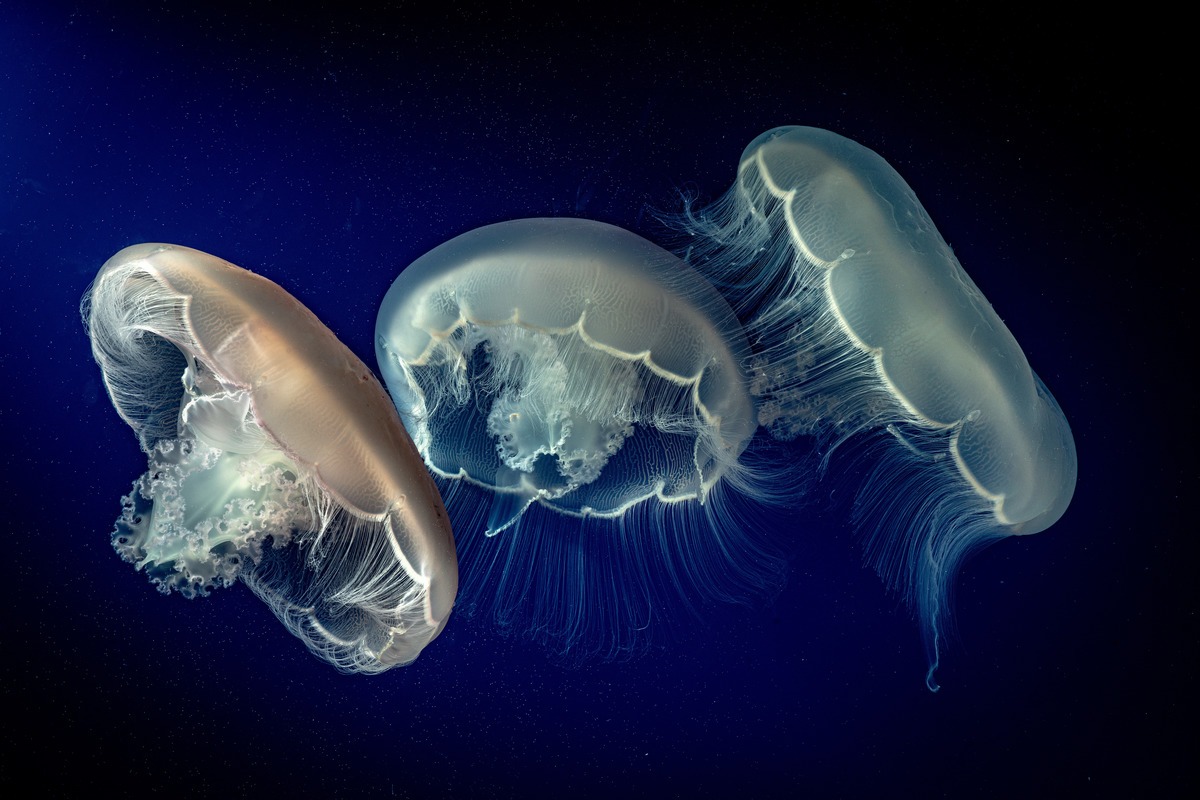Summary:
1. Introduction to Moon Jellyfish: A Unique Species
2. Anatomy and Physiology of Moon Jellyfish
3. Moon Jellyfish in the Wild
4. Life Cycle and Reproduction of Moon Jellyfish
5. Moon Jellyfish in Aquariums: A Captivating Experience
Have you ever marveled at the beauty and tranquility of the ocean? The vast expanse of the sea holds countless wonders, including some extraordinary creatures. One such fascinating species is the ethereal Moon Jellyfish. This article will delve into the unique and captivating aspects of these mesmerizing jellyfish.
1. Introduction to Moon Jellyfish: A Unique Species
The Moon Jellyfish, scientifically known as Aurelia aurita, is a jellyfish species belonging to the phylum Cnidaria. With its translucent bell-shaped body and delicate tentacles, it exhibits an otherworldly charm. Unlike its colorful and venomous counterparts, the Moon Jellyfish is harmless to humans, making it a popular subject for observation and study.
2. Anatomy and Physiology of Moon Jellyfish
To fully grasp the awe-inspiring nature of Moon Jellyfish, let’s explore its intricate anatomy and physiology. The jellyfish consists of a transparent bell-shaped body, also known as a medusa. This bell is composed of 95% water, which allows the jellyfish to gracefully float and drift with the ocean currents.
Radiating from the center of the bell are numerous tentacles, which house specialized cells called cnidocytes. These cnidocytes contain harpoon-like structures known as nematocysts that are used for capturing prey and for self-defense. The tentacles gracefully trail beneath the jellyfish when undisturbed, adding to its ethereal beauty.
3. Moon Jellyfish in the Wild
Moon Jellyfish are widely distributed throughout the world’s oceans, from the Arctic to the Mediterranean Sea. Their ability to survive across various temperatures and depths is truly remarkable. In the wild, these jellyfish are often found in large aggregations called blooms, creating a stunning spectacle as they pulsate rhythmically.
Did you know that Moon Jellyfish have an interesting feeding strategy? They primarily feed on zooplankton, tiny organisms that drift with the ocean currents. Using their tentacles, Moon Jellyfish capture these microscopic organisms, and with the help of special cells lining their oral arms, the captured prey is transported to their mouth at the center of the bell.
4. Life Cycle and Reproduction of Moon Jellyfish
The life cycle of Moon Jellyfish is nothing short of remarkable. Starting as tiny larvae called planula, these jellyfish undergo metamorphosis and transform into a polyp. The polyp, resembling a small tube attached to a solid surface, sets the stage for the formation of new jellyfish.
Through a process known as asexual reproduction, the polyp starts producing small buds called ephyrae. These ephyrae eventually detach from the polyp and grow into adult Moon Jellyfish, continuing the lifecycle. This remarkable ability to reproduce sexually and asexually allows Moon Jellyfish to thrive in various habitats.
5. Moon Jellyfish in Aquariums: A Captivating Experience
For those captivated by the enchanting allure of Moon Jellyfish, many aquariums worldwide have dedicated exhibits to showcase these magnificent creatures. Stepping into a jellyfish exhibit is like entering an ethereal underwater wonderland.
Aquariums carefully recreate the ideal conditions for Moon Jellyfish, maintaining water temperature and salinity and providing an ample food supply. Visitors can witness these delicate creatures gracefully swimming, their translucent bodies catching the light. The serenity and beauty of the Moon Jellyfish exhibit offer a memorable and uplifting experience for all ages.
In conclusion, the Moon Jellyfish is truly a marvel of nature. Its delicate and mesmerizing presence reminds us of the extraordinary diversity of life in our oceans. Whether observed in the wild or at an aquarium, these enchanting jellyfish inspire wonder, appreciation, and a deep respect for the mystical world beneath the ocean’s surface. So take a moment, click on the link to our Moon Jelly Cam, and embark on a journey to witness the captivating beauty of these ethereal creatures in real time!
*****
Source Description
In case you need it today, the link to our Moon Jelly Cam is in our bio 💙

